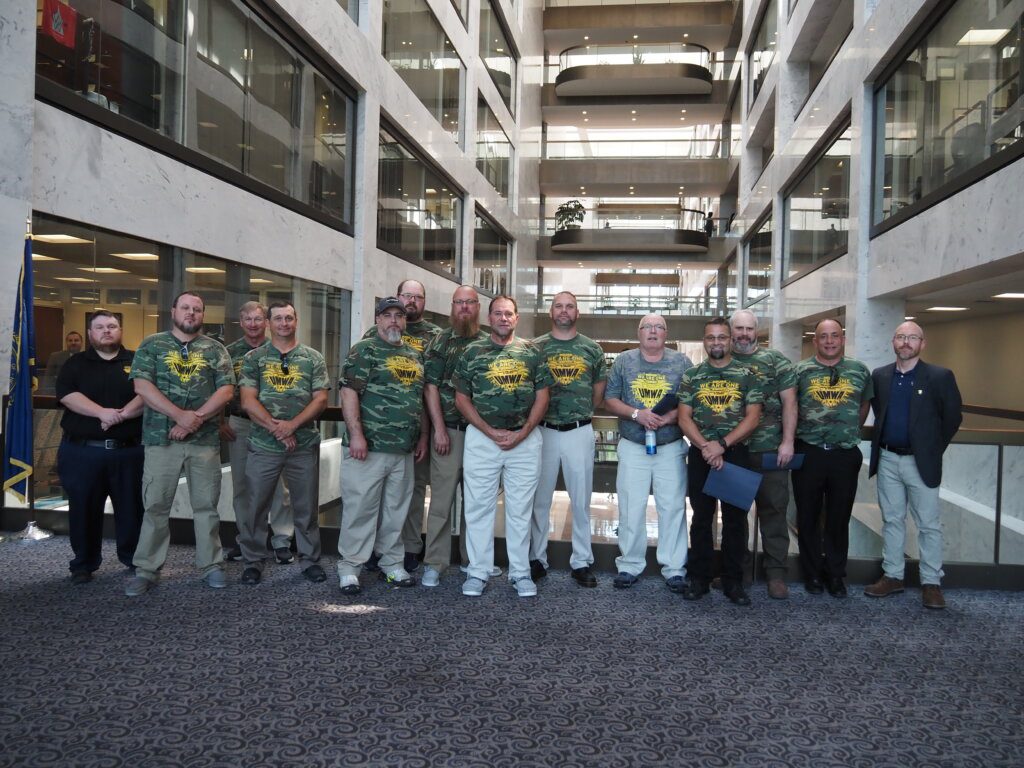On May 11, 2023, the U.S. Environmental Protection Agency (EPA) proposed new carbon pollution standards for coal and natural gas-fired power plants that they say will protect public health, reduce harmful pollutants and deliver up to $85 billion in climate and public health benefits over the next two decades. In reality, a newer version of the Clean Power Plan (CPP). This will be a fight the UMWA will take on all over again.
The proposed rule will cause even more job losses in our nation’s coal-producing areas without any real prospect of any new substantial job creations. There is a real concern about the proposed rule landing at a time when the promises of job creation and job retraining in the coalfields remain little more than words on paper. The so-called just transition that simply does not exist.
The new proposal comes nearly a decade after a finalized version of the rule (CPP), which would have taken a system-wide approach to pollution reduction by forcing plants to use more renewable energy sources, such as wind and solar.
UMWA has significant concerns with the proposed rule
“The next round of coal-fired power plant closures is coming but the coal-producing areas of the country are still reeling from the last round and are not prepared for this one,” said President Roberts.
“We have long said that if there are no new jobs for displaced coal miners to step into when their coal and coal-related jobs are gone, then our government will have failed, once again, an entire region of our nation. While there has been a promise of new jobs, it seems that is all it is, a promise.” Roberts said.
The UMWA has been asking for the development of Carbon Capture and Sequestration (CCS) technology to be commercially applied to coal-fired power plants for well over a decade, to no avail. The CCS technology would not only preserve coal mining jobs but it is the only way to reduce global greenhouse gas emissions in the long term.
“While we appreciate the attention the proposed rule gives to CCS technology, we would point out that nearly two years after the Bipartisan Infrastructure Law (BIL) was passed that allocated billions for the construction of commercial-grade coal-fired power plants to demonstrate that CCS can work, not one shovel of dirt has been moved to actually begin construction,” said President Roberts.
“The proposed rule for CCS application to coal-fired power are ambitious, to say the least, especially when factoring in the lag in the development of technology on a commercial scale, we have a hard time seeing how this will match up in real-time,” said Roberts.
Under the proposal, new and existing gas plants running regularly would have to capture 90 percent of their emissions by 2035. Existing coal-fired plants slated to run into 2040 would have to capture 90 percent by 2030. Gas plants expected to operate for decades could comply with the rule by co-firing with low-emitting hydrogen, gradually ramping up to a 96 percent hydrogen blend by 2038.
“The UMWA intends to submit our comments regarding the proposal in the next few weeks. We intend to fight the newly proposed EPA power plant rule just like we fought the CPP. We do not intend to leave any UMWA worker behind and the government shouldn’t be in the business of allowing thousands of workers and their families to lose their jobs either,” Roberts said.

Legal woes hang in the balance?
Having rolled out its strongest proposal to date to slash global-warming emissions from power plants, the EPA must first face off with the courts. According to legal experts, this will be no easy feat.
The earlier version of the proposed rule, the CPP, which would have taken a system-wide approach to pollution reduction by forcing plants to use more renewable energy, is a regulation that never took effect because of years of legal challenges. It was ruled out of bounds just last year in the case of West Virginia v. EPA.
The new power plant proposal will likely face the same or similar legal challenges as 2015’s CPP. The EPA will first review public comments on the proposal and will ultimately issue a final version of the rule. The proposal is scheduled to be finalized by June, 2024 but could take longer if the White House or Congress changes hands next year.
In the case of West Virginia v. EPA, Chief Justice John Roberts outlined the limits of the EPA’s powers to force coal retirements, a stance that will likely be under scrutiny with the new proposed rule.
In Chief Justice’s written brief, he stated, “Capping carbon dioxide emissions at a level that will force a nationwide transition away from the use of coal to generate electricity may be a sensible solution to the crisis of the day. But it is not plausible that Congress gave EPA the authority to adopt on its own such a regulatory scheme. A decision of such magnitude and consequence rests with Congress itself or an agency acting pursuant to a clear delegation from that representative body.”
Legal experts say the Supreme Court’s guidance in the West Virginia case and the presence of new climate legislation from Congress could help the agency survive yet another legal fight over its approach to slashing greenhouse gas emissions from the power sector.
Depending on the length of time it takes for the EPA to complete its final rule, the regulations could be at risk, depending on the outcome of the 2024 election

